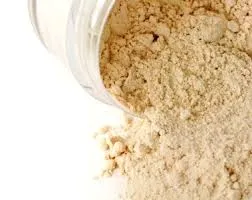Color Additives for Plastics Enhancing Aesthetics and Functionality
Color additives play a crucial role in the plastics industry, providing not only aesthetic enhancements but also functional benefits. These additives can transform a bland, colorless plastic into a vibrant and appealing product, making them indispensable in various applications ranging from packaging to consumer goods, automotive components, and medical devices.
The Importance of Color in Plastics
Color can significantly influence consumer behavior. Research indicates that color can sway purchasing decisions, making it a powerful marketing tool. In the realm of plastics, the right color can enhance brand recognition, create emotional connections, and convey quality and reliability. For instance, a striking, bold color on a packaging material can attract attention on crowded shelves, while a subtle pastel shade may suggest elegance and sophistication.
Types of Color Additives
Color additives for plastics can be categorized into two main types dyes and pigments.
1. Dyes Dyes are soluble organic compounds that impart color by becoming a part of the plastic matrix. They are often used when transparency is desired, as they allow light to pass through while providing color. However, dyes may have lower resistance to heat and light compared to pigments, making them less ideal for outdoor applications.
2. Pigments Unlike dyes, pigments are insoluble particles that provide color by scattering light. They are available in a wide range of shades and have superior thermal stability. This makes pigments suitable for various applications, including those exposed to harsh environmental conditions. Common examples include titanium dioxide for white coloring and carbon black for black coloring.
Properties and Selection Criteria
color additives for plastics

When selecting color additives for plastics, several factors must be considered
. These include- Compatibility The additive must be compatible with the base polymer to ensure proper dispersion and color stability.
- Heat Stability Certain processes, such as injection molding or extrusion, involve high temperatures, so the color additive should withstand these conditions without degrading.
- Lightfastness For products exposed to sunlight, color additives should possess resistance to fading caused by UV radiation.
- Food Safety When color additives are used in food packaging or utensils, they must comply with safety regulations and be non-toxic.
The Future of Color Additives in Plastics
As the demand for sustainable products grows, the development of eco-friendly color additives is becoming increasingly important. Innovations include natural colorants derived from plants and minerals, which are biodegradable and less harmful to the environment. Additionally, advances in technology are enabling the creation of color additives that can change color in response to environmental stimuli, providing both aesthetic appeal and functionality.
In conclusion, color additives are vital in enhancing the value of plastics in various markets. They not only improve visual appeal but also contribute to the overall performance of plastic products. As the industry continues to evolve, the focus on sustainability and innovative color solutions is likely to shape the future of color additives in plastics, offering exciting possibilities for manufacturers and consumers alike. Whether in consumer goods, automotive interiors, or medical devices, the impact of color additives is profound and far-reaching, making them an essential component of plastic manufacturing.

